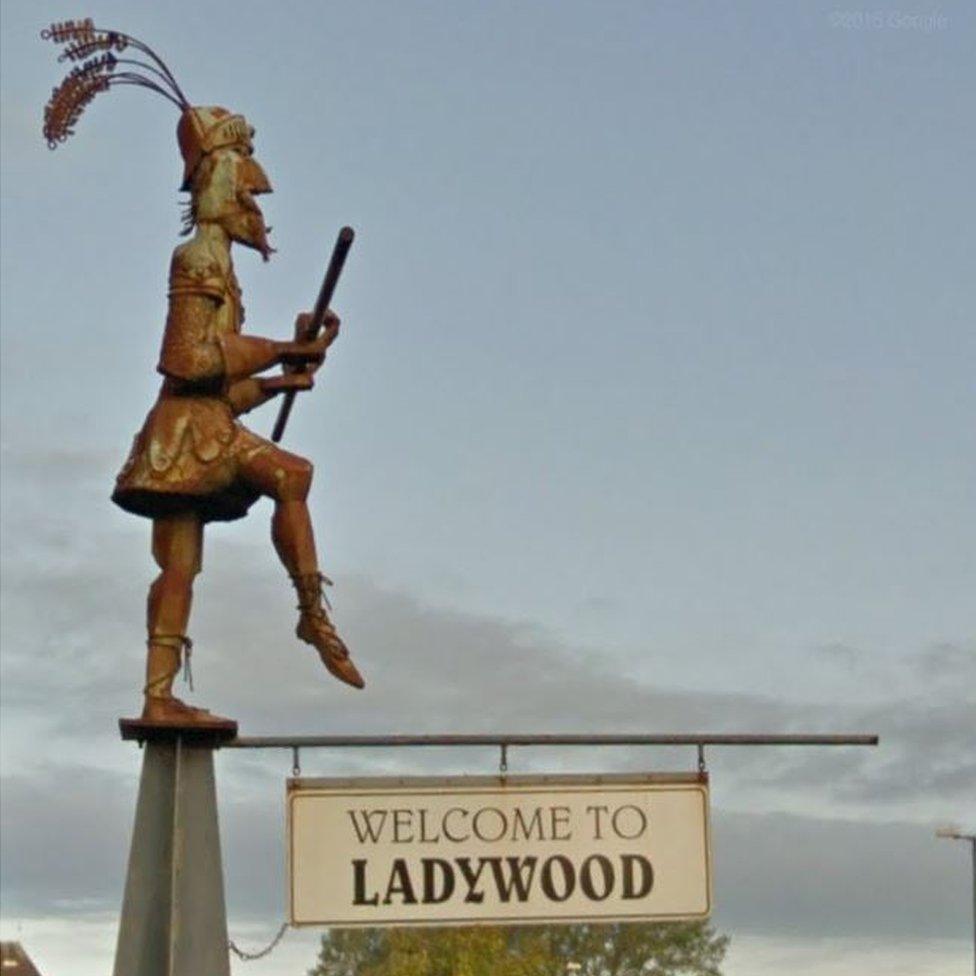The secrets of Birmingham's sculptures unlocked
- Published

Do you know the significance of the padlock sculpture in Birmingham's Jewellery Quarter?
Birmingham's rich manufacturing history, busy workshops and pioneering art school are often credited as moulding its diverse landscape of public art. All around the city there are modern and classic pieces to be enjoyed by Brummies and visitors alike.
Some sculptures, like the bronze Bull, external outside the Bulling shopping centre and the water feature, affectionately known as the Floozie in the Jacuzzi, external, are well-known. But others hide in out of the way locations where their stories are waiting to be unlocked.
Liam Anderton got in touch through Your Questions to ask: "Why is there a lock statue on Newhall Hill near the junction with Sandpits? There has to be a key somewhere around the city."
He was not alone in wondering about the significance of the silver heart shaped padlock tucked between a car dealership and a lamp post in the Jewellery Quarter.

Liz Dexter and Emma Volante set out along the Charm Bracelet Pavement Trail in the Jewellery Quarter
"I had seen the padlock sculpture before and wondered what it was," said Birmingham resident Liz Dexter who blogged about her and best friend Emma Volante's quest to find out., external
They discovered that the lock marked the start of the Charm Bracelet Pavement Trail, external, designed by Birmingham public artists Mick Thacker and Mark Renn.
"Each piece was linked to an important aspect of the Jewellery Quarter's history and we really enjoyed learning about it," said Mrs Dexter.
Mr Anderton was right - there is a key - it is the first of 16 tiles on the trail.

Meanwhile, online reader John Davies got in touch to ask: "What is the significance of the jester or medieval dancer statue on Ladywood Middleway near Five Ways? Is there a story behind it?"
The statue Mr Davies described is a 3m (9.8ft) high figure standing 4.5m (14.7ft) high on a concrete pedestal on the central reservation of the Ladywood Middleway opposite the junction to St Vincent Street West.

Blondin by Paul Richardson
But it does not depict a jester or dancer - it is a caricature of 19th century French stuntman Charles Blondin by artist Paul Richardson.
He was an international celebrity of the time due to feats such a crossing Niagra Falls on a tightrope. But why is his likeness in Birmingham?
It was commissioned in 1992 by the Ladywood Community Forum to commemorate his tightrope walk across the Edgbaston reservoir on 6 September, 1873.
"There is a story which claims that the 3,000m (9,842.5ft) long rope was not tight enough and during the crossing it sagged so low that Blondin had to cross part of the way underwater," according to Public Sculpture of Birmingham by Liverpool University Press (1998), external

This story was inspired by questions from our online readers.
Have you got a question about the West Midlands?
Is there something you have seen or heard that you would like us to investigate?
It could be a burning issue or something you have always wondered about the area or its people.
Use the tool below and we could be in touch.
